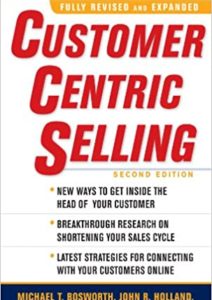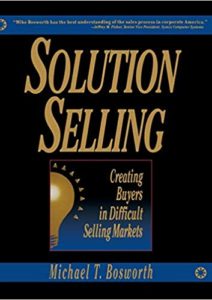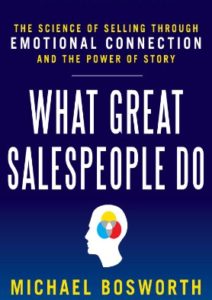Storytelling and sales may not seem like two things that go together, but knowing how to utilize stories as a tool during sales pitches can be an invaluable tool. John Golden interviews Mike Bosworth in this expert sales interview.
Storytelling and Sales were discussed, including:
- The most critical question a salesperson can ask
- Why you should never use “we” in your stories
- Two stories that you should have in your back pocket
Can I Share A Story?
Bosworth utilizes a simple, but powerful question to integrate storytelling into his sales pitch. The question is: “Can I share a story with you about another person who does your job?” In his career, he had a 100% acceptance rate of people wanting to hear his story. Then, he uses the story to lead the potential buyer to several different conclusions. The first conclusion is that he has character, and isn’t going to hustle them. Secondly, it demonstrates that he has worked with other people in their same industry, and has solved their problems. Third, it creates a bit of peer envy, because there is a competitor out there who has solved the problem that they haven’t figured out how to answer yet.
Take the “We” Out of Your Stories:
Everybody tells stories. We tell stories often in our personal lives, like at birthdays, Thanksgiving and during golf games. And some of us share stories in our professional life. What many salespeople don’t understand how to tell a story that is impactful and will ultimately lead to a sale. Most people don’t share stories consciously, where they have a plan and a motive for telling it. A good story will have a setting and a struggle, followed by insight and a revolution, carried out by a hero. Most stories, however, don’t have a hero and don’t develop a personal connection with potential buyers. Stories are lead by “we.” For example, “we started this company,” “we developed blank to fix blank.” These kinds of stories don’t evoke an emotional reaction.
Stories for Every Salesperson:
If you’re a salesperson that wants to use storytelling to increase profits, there are two stories that you should keep in your back pocket. The first is the story of the company that you work for. This is a great story to tell during the first meeting with a potential buyer, and it explores the kind of culture and credibility that the company has. The second story is your own, personal story. This is best to share during a subsequent conversation. You want to ensure that it includes an arc, and will resonate with the buyer. Describe the potholes that you have come across in your life, and show them that you can be vulnerable and take feedback, and can overcome difficulties in an intentional, specific way.
About Our Host
John is the Amazon bestselling author of Winning the Battle for Sales: Lessons on Closing Every Deal from the World’s Greatest Military Victories and Social Upheaval: How to Win at Social Selling. A globally acknowledged Sales & Marketing thought leader, speaker, and strategist. He is CSMO at Pipeliner CRM. In his spare time, John is an avid Martial Artist.
Pipeliner CRM empowers salespeople to truly connect with buyers.Get your free trial of Pipeliner CRM now.











Comments